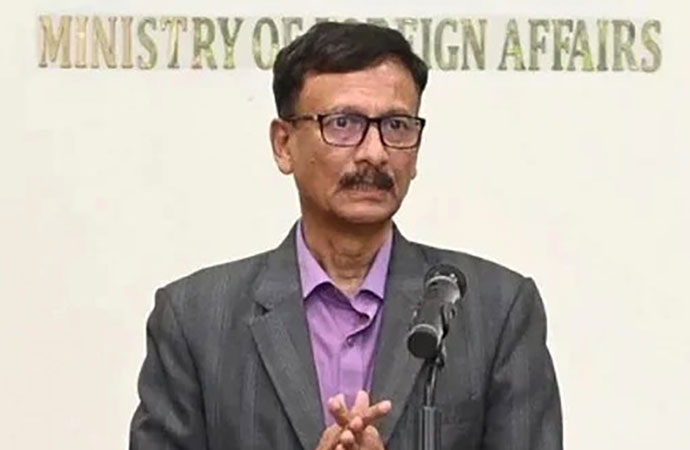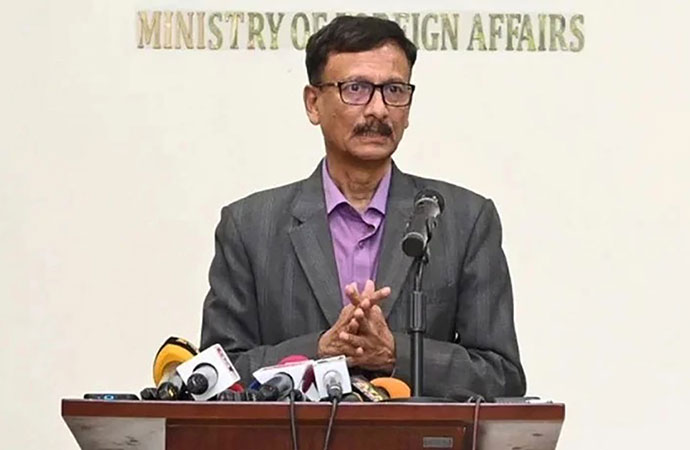Featured 1

Photo: AP/UNB
Despite the significant development recently of the recognition of the persecution faced by the Rohingya community in Myanmar as genocide by the United States government, the fact remains that they are still a people living largely in limbo, mostly in squalid and inadequate camps outside their own country, and the constant uncertainty that hangs over their lives in such circumstances.
On March 31, advocacy group Human Rights Watch said in a statement that the Indian government's forced return of a Rohingya woman to Myanmar highlighted the life-threatening risks facing Rohingya refugees in India. It said international law prohibits the forced return of refugees to places where their lives or freedom would be threatened. A day later, the Jammu and Kashmir Police detained 25 more Rohingya refugees who were part of an apolitical religious group. They too have been sent to a holding centre in Hiranagar jail in the Jammu region, from which Hasina Begum, the woman, was earlier deported. It is now feared that this group may also be deported. Since October 2018, the Indian government has deported 12 Rohingya to Myanmar, claiming that they left voluntarily. However, the government denied repeated requests by UNHCR to gain access to them to independently assess whether the decision was voluntary.
India hosts about 40,000 Rohingya refugees living in camps and slums in different cities and regions, including Jammu, Hyderabad, and New Delhi. Around 5,000 refugees are in Jammu, where they live in makeshift houses or shanties. Several right-wing leaders have protested against the Rohingya refugees, labelling them as illegal immigrants and a threat to national security, and demanding their deportation. A suspiciously high number of fires have broken out in Rohingya refugee camps in recent years in Jammu and elsewhere, and while the cause of the fires remain mostly unknown, the Rohingyas did not rule out the possibility of deliberate sabotage by right-wing groups.
The fires are increasingly a feature of their camps in Bangladesh as well, home to the largest community of Rohingya refugees in the world. One that killed a six-year-old boy and left around 2000 refugees homeless in early March was the sixth of the year already, and since then there have been at least two more, albeit smaller ones. The common factor behind them all is that the causes of the fire are never pinpointed. It is also interesting that during the first couple of years since their exodus from Myanmar peaked in August 2017, when there was greater goodwill in the host community towards them, there were almost no fires. But nowadays we are used to hearing some of the same rhetoric that they are subjected to in India being applied to them here, and that doesn't bode well.
The solution of course, remains their safe and voluntary repatriation, for which the principal condition remains the Myanmar government's readiness to play their part, something they have woefully failed to do so far. Till then, in order to demonstrate our own sincerity towards hosting them, as far as the fires are concerned, steps must be taken to allow more fire-resistant materials to build the shelters in the camps, and additional openings in the fencing need to be built so that refugees can reach safety in an emergency. Otherwise, their lives here won't constitute much of an improvement in terms of the dangers they face, than what they had to leave behind.

























Leave a Comment
Recent Posts
Remembering Kalidas Karmakar ( ...
The art world remembers Kalidas Karmakar, a visionary whose creativity ...
An Evening with Shishir Bhatta ...
Cosmos Art Echo, the artist talk initiative of Gallery Cosmos and Cosm ...
Myanmar denies genocide, calls Rohingya crackdown co ..
Yes, of course
Earth’s average temperature last year hovered among ..
Bangladesh and Singapore: A Tale of Two Nations